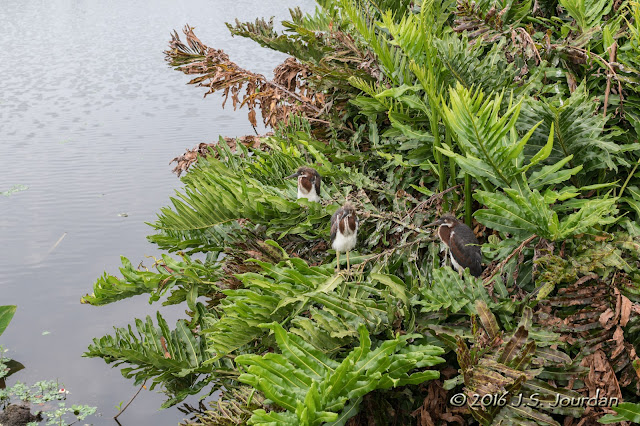Wakodahatchee Wetlands Bonanza - 04 May 2016
I then hopped on the Florida Turnpike and headed north about an hour’s drive to Delray Beach, Fl and Wakodahatchee Wetlands. The 56-acre wastewater treatment facility houses the state’s largest Wood Stork rookery, and the ~½ mile boardwalk wends its way through several ponds and a waterbird paradise.
A pair of Black-bellied Whistling Ducks were nearby and also too cute to resist.
Not much distance away were several Purple Gallinules. One was close enough to dispense with the digiscoping equipment and just use the 300/2.8 VRII.
Anhingas are just the coolest feathered dinosaurs...Their babies look a bit phalic-y.
I drove back to Miami and got into the hotel just moments before thunderstorms opened up on the city. We would lose cable signal just as I was watching the Cubs-Pirates game. The score?
C3-PO… No kidding. May the 4th Be With You!
Wakodahatchee Wetlands, Palm Beach, Florida, US
May 4, 2016 10:00 AM - 11:30 AM
Protocol: Traveling
2.0 mile(s)
20 species
Black-bellied Whistling-Duck (Dendrocygna autumnalis) 6
Common Gallinule (Gallinula galeata) 6
American Coot (Fulica americana) 2
Purple Gallinule (Porphyrio martinica) 6
Gray-headed Swamphen (Porphyrio poliocephalus) 3
Black-necked Stilt (Himantopus mexicanus) 2
Wood Stork (Mycteria americana) 24
Anhinga (Anhinga anhinga) 6
Double-crested Cormorant (Nannopterum auritum) 12
Least Bittern (Ixobrychus exilis) 1
Little Blue Heron (Egretta caerulea) 4
Tricolored Heron (Egretta tricolor) 8
Green Heron (Butorides virescens) 7 Adult and 2 chicks, 4 more adults
Western Cattle Egret (Bubulcus ibis) 6
Great Egret (Ardea alba) 12
Great Blue Heron (Ardea herodias) 6
Glossy Ibis (Plegadis falcinellus) 5
Blue Jay (Cyanocitta cristata) 1
Brown Thrasher (Toxostoma rufum) 2
Red-winged Blackbird (Agelaius phoeniceus) 6
View this checklist online at https://ebird.org/checklist/S1
This report was generated automatically by eBird v3 (https://ebird.org/home)
May 4, 2016 10:00 AM - 11:30 AM
Protocol: Traveling
2.0 mile(s)
20 species
Black-bellied Whistling-Duck (Dendrocygna autumnalis) 6
Common Gallinule (Gallinula galeata) 6
American Coot (Fulica americana) 2
Purple Gallinule (Porphyrio martinica) 6
Gray-headed Swamphen (Porphyrio poliocephalus) 3
Black-necked Stilt (Himantopus mexicanus) 2
Wood Stork (Mycteria americana) 24
Anhinga (Anhinga anhinga) 6
Double-crested Cormorant (Nannopterum auritum) 12
Least Bittern (Ixobrychus exilis) 1
Little Blue Heron (Egretta caerulea) 4
Tricolored Heron (Egretta tricolor) 8
Green Heron (Butorides virescens) 7 Adult and 2 chicks, 4 more adults
Western Cattle Egret (Bubulcus ibis) 6
Great Egret (Ardea alba) 12
Great Blue Heron (Ardea herodias) 6
Glossy Ibis (Plegadis falcinellus) 5
Blue Jay (Cyanocitta cristata) 1
Brown Thrasher (Toxostoma rufum) 2
Red-winged Blackbird (Agelaius phoeniceus) 6
View this checklist online at https://ebird.org/checklist/S1
This report was generated automatically by eBird v3 (https://ebird.org/home)























































